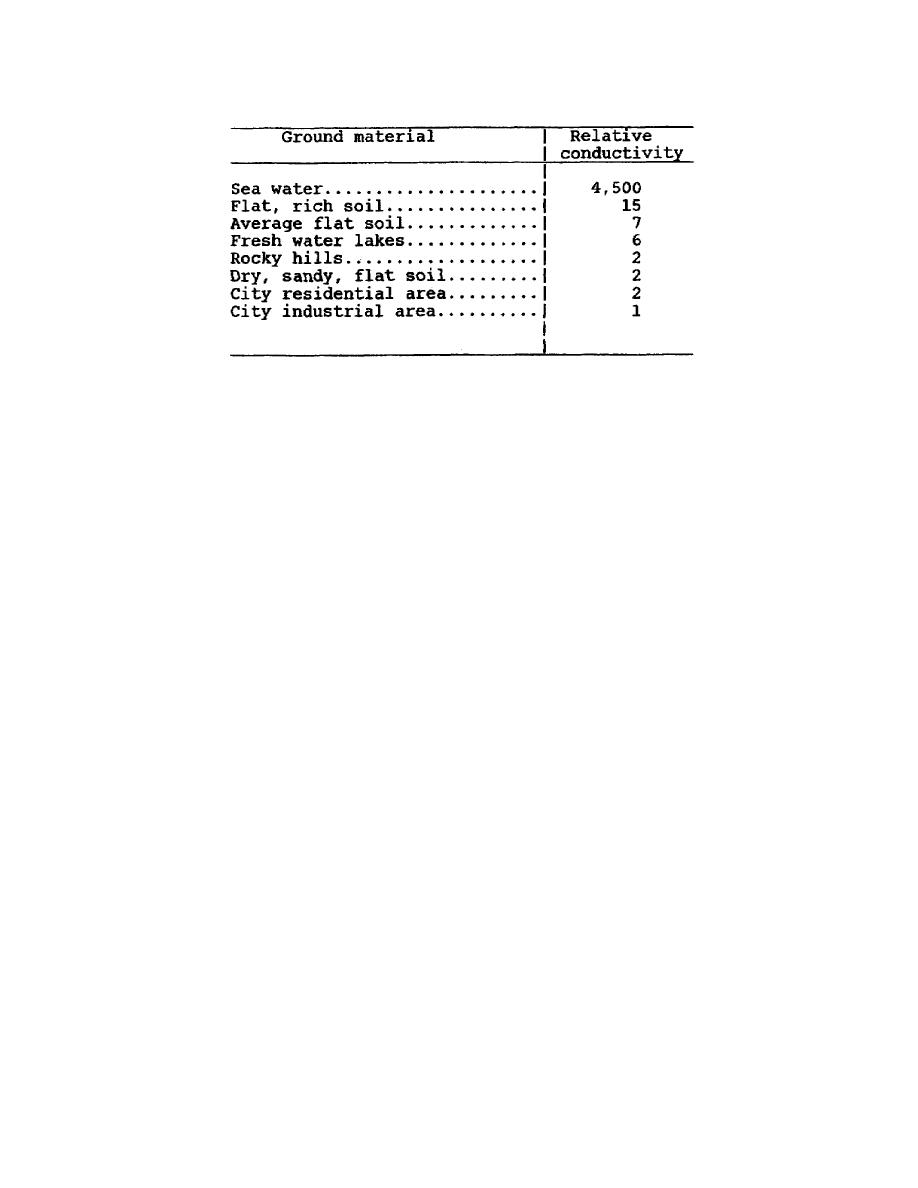
Table 6.
Ground Material Conductivity.
5.
Effects of Practical Grounds.
a. Up to this point we have discussed the reflection factor over
a uniform high conducting ground.
As we can see from table 6, the
conductivity varies over different types of ground.
How does this
affect a reflected signal?
Instead of having a maximum reflection
factor of 2 (1 from the direct wave and 1 from the ground reflected
wave), we might have the direct wave only. This could occur if the
antenna was erected over a poor conducting ground.
In addition,
incomplete nulls might be produced.
This would happen if the
reflected wave was in phase with the direct wave and both waves not
of equal amplitude.
Also, the reflected wave could be absorbed by
the earth.
b. Frequency effects.
Not only does the ground affect the
radiation pattern, it has a pronounced effect on certain frequencies.
At low and medium frequencies, the radio waves go into the earth to a
depth of about 50 feet. The lower the conductivity, the further the
wave goes into the earth.
At high frequencies, the wave penetrates
to a depth of about 5 to 10 feet. Ground absorption is considerable
for takeoff angles below 12 degrees. As the frequency is increased,
the ground reflected wave is further absorbed until only the direct
wave is left. The radiation resistance over imperfect ground is less
than it is over a good conducting ground.
c. Antenna height. The question of how high an antenna actually
is above ground is not an easy one to answer.
Since the wave goes
into the earth, it is difficult to determine the true height of an
antenna.
We can make any ground a better reflecting conductor by
using a counterpoise or radial ground, to create a definite starting
point.
63



 Previous Page
Previous Page
